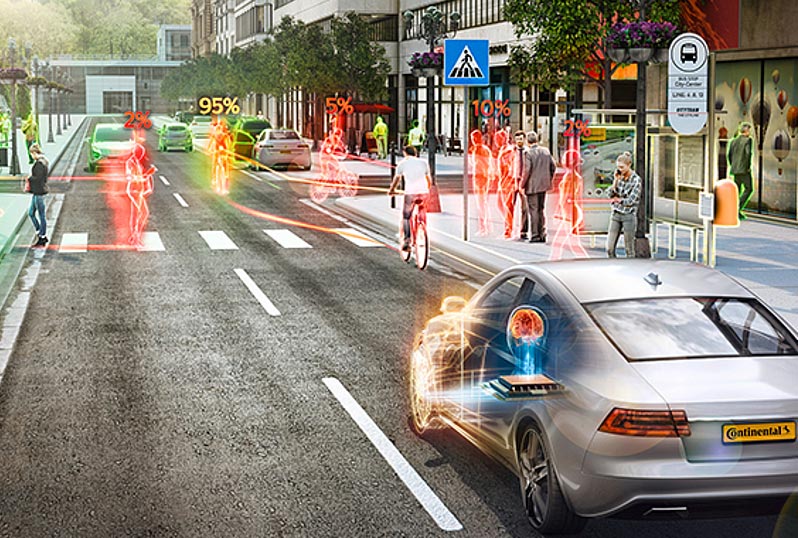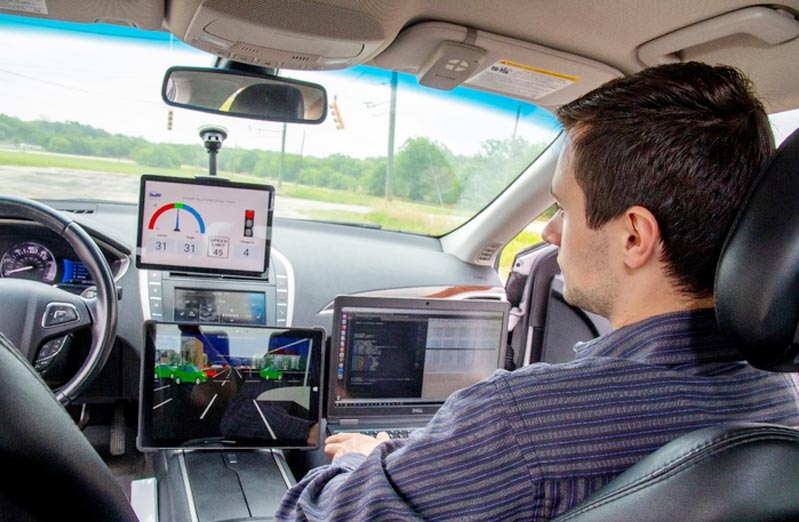
Students from the Technical University of Munich (TUM) have developed the longest range electric car in the world. The team drove more than 2.573 kilometers on a single battery charge. As part of the IAA Mobility fair, the team competed for the new world record at the Munich airport and successfully brought the title home to Munich. The test lasted an entire six days, during which the team slept on cots in an airplane hangar. The TUfast Eco team faced…

World-class technology technology for a 2-liter class hydrogen engine (or a passenger car hydrogen engine) capable of running entirely on hydrogen has been developed for the first time in the country. Emissions of carbon dioxide and fine dust reduced by 99% and 90%, respectively. Amid the fierce competition throughout the globe to develop hydrogen mobility technologies to achieve carbon neutrality, a new technology for a 2-liter class hydrogen-fueled engine (a passenger car hydrogen engine) capable of running entirely on hydrogen…

Precisive real-time prediction of the movement of nearby vehicles or the future trajectory of pedestrians is essential for safe autonomous driving. A research team led by City University of Hong Kong (CityU) recently developed a novel AI system that improves predictive accuracy amid dense traffic and increases computational efficiency by over 85%, offering great potential for enhancing the safety of autonomous vehicles. Professor Wang Jianping, in the Department of Computer Science (CS) at CityU, who led the study, explained the…

Eco-driving technology can significantly improve the energy efficiency of both electric, internal combustion vehicles. A Southwest Research Institute project funded by the U.S. Department of Energy (DOE) has demonstrated an average of 15% energy savings when vehicles outfitted with connected and automated vehicle systems, or CAVs, are introduced into traffic. CAVs use wireless smart technology to communicate with other CAVs and traffic infrastructure. SwRI’s eco-driving framework uses custom software and predictive powertrain algorithms to enable human drivers to make more efficient…

…make self-driving cars safer – and cheaper. The combined radar expertise of Fraunhofer IZM is making the sensors needed for self-driving cars not just cheaper, but more reliable and accurate at the same time. The researchers joined a group of industry partners to design a radar system with an angular resolution of below one degree at 180° coverage. One advantage of the system: Autonomous cars need fewer than half of the radars they need nowadays. This feat was made possible…

Dynamic risk management. An important challenge for the acceptance of autonomous driving is to ensure the safety of road users without risking a loss of speed. A team of scientists from the Fraunhofer Institute for Experimental Software Engineering IESE, the Fraunhofer Institute for Cognitive Systems IKS, and the University of York has now developed a dynamic risk management system as part of a ref-erence safety architecture. This provides a vehicle with a better understanding of current driving hazards. AI capabilities…

Researchers at the FAMU-FSU College of Engineering are improving the safety and performance of electric vehicles through a new design that protects their batteries. Their design uses tubes filled with paraffin wax, which is a type of phase change material, or PCM. These materials are commonly used to store and dissipate heat, making them useful for protecting a battery from overheating. The researchers’ new method uses PCM-filled tubes in another way, exploring their application as protection against an impact. The…

Fraunhofer IPMS drives the Revolution in Vehicle Architecture. The vehicles of the future will be automated and networked to drive autonomously in road traffic and to relieve the driver. This requires new vehicle architectures and high-performance components. The Fraunhofer IPMS is working on various research projects to create the necessary conditions. Automated connected driving is leading to an explosion in bandwidth and computing requirements in vehicles. To cope with this, zonal arrangements with zone gateways and central computers and a…

… hampered by a lack of accurate simulations of human behavior. Algorithms that accurately reflect the behaviour of road users – vital for the safe roll out of driverless vehicles – are still not available, warn scientists. They say there is “formidable complexity” in developing software that can predict the way people behave and interact on the roads, be they pedestrians, motorists or bike riders. To improve the modelling, a research team led by Professor Gustav Markkula from the Institute…

New Collaborative Research Center for Software Methods at KIT – DFG funds excellent KIT research with around EUR 11 million. Cyber-physical systems, such as vehicles, trains, airplanes, smart homes, or production facilities, combine electronic and mechanical elements with software. Development of these systems is highly complex due to the large number of dependencies among the components. “When a car’s wire harness is modified, the diameter of the cable duct also has to be changed,” says Professor Ralf Reussner, Spokesman of…

Car2Human communication at LASER 2023… How do you decide whether a pedestrian needs to wait or it’s safe for them to cross the road in front of a car? In today’s world, car drivers and pedestrians simply exchange a brief eye contact or small hand gestures to express their intentions to one another. But how will future autonomous cars communicate? Researchers involved in the MaMeK project are seeking to answer that question. They will be presenting their findings at the…

The latest competition car from student group TUfast Eco makes its debut. The new electric vehicle builds on previous successes and sets new standards in terms of efficiency. Lower weight, increased efficiency in individual components and significantly reduced aerodynamic drag distinguish the new model from its predecessor. The car will be put to the test in competition with other European student groups at the Shell Eco Marathon in May 2023. Industry players aren’t the only ones to accept the major…

Internally funded project modifies commercially available tester for electric vehicle applications. A Southwest Research Institute team has developed a mechanical testing device to analyze fluids and lubricants formulated for electric vehicles. The team modified a commercial tribology testing device to give it the capability to evaluate the impact of electric currents in fluids, measuring the wear and friction on the automobile parts in the presence of an applied voltage. “The electrification of the automotive industry has accelerated over recent years,…

The automotive industry is working intensively on autonomous driving – a demanding and multifaceted challenge. The Cognitive Neuroinformatics working group at the University of Bremen, headed by Professor Kerstin Schill, has contributed important research findings to the development of advanced driver assistance systems as part of a cooperation project with automotive supplier Continental. With the help of artificial intelligence, complex traffic situations can now be more easily identified. PRORETA 5 is the name of the research project that the automotive…

NEXTCAR project aims to reduce energy consumption by over 30%. Southwest Research Institute (SwRI) has embarked on the second phase of an ongoing initiative to develop cutting-edge connected and automated vehicle (CAV) technologies to help passenger vehicles operate more efficiently, reducing energy consumption and emissions. In 2021, the DOE awarded a three-year, $5.25 million contract to SwRI as part of the Advanced Research Projects Agency-Energy’s (ARPA-E) NEXTCAR program. Having successfully met Phase I requirements, SwRI was one of four teams…

Self-driving vehicles. People use their eyes and ears to pick up on traffic situations involving potential hazards. For self-driving vehicles to do the same thing, they need a whole host of sensors. As the number of sensors they contain increases, however, so too does the amount of space required to fit them in – something that is often incompatible with the vision of designers. Now, researchers at the Fraunhofer-Gesellschaft have discovered a method of integrating certain sensors discreetly. Their solution…